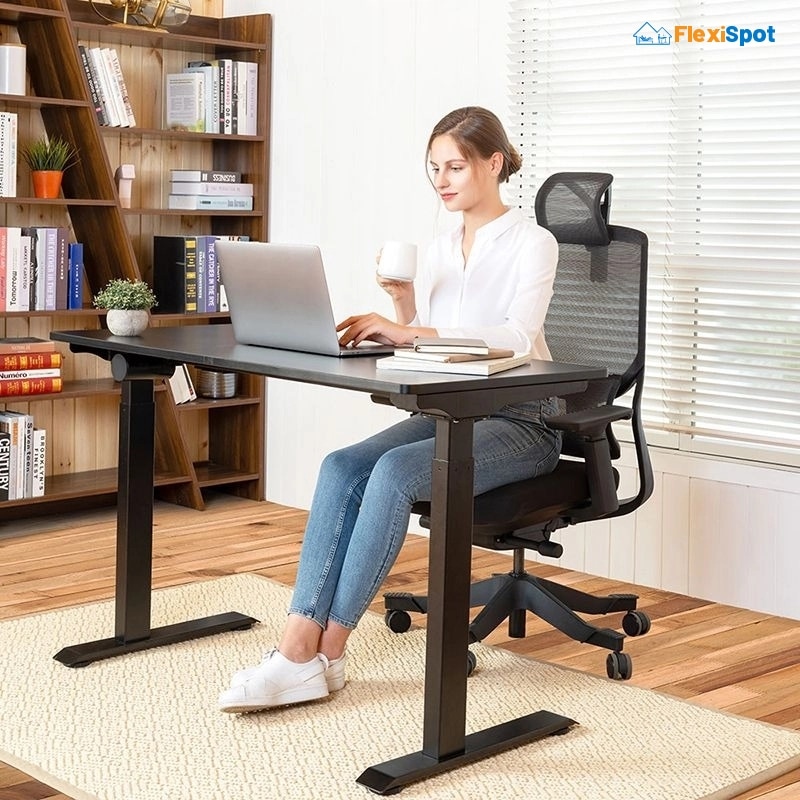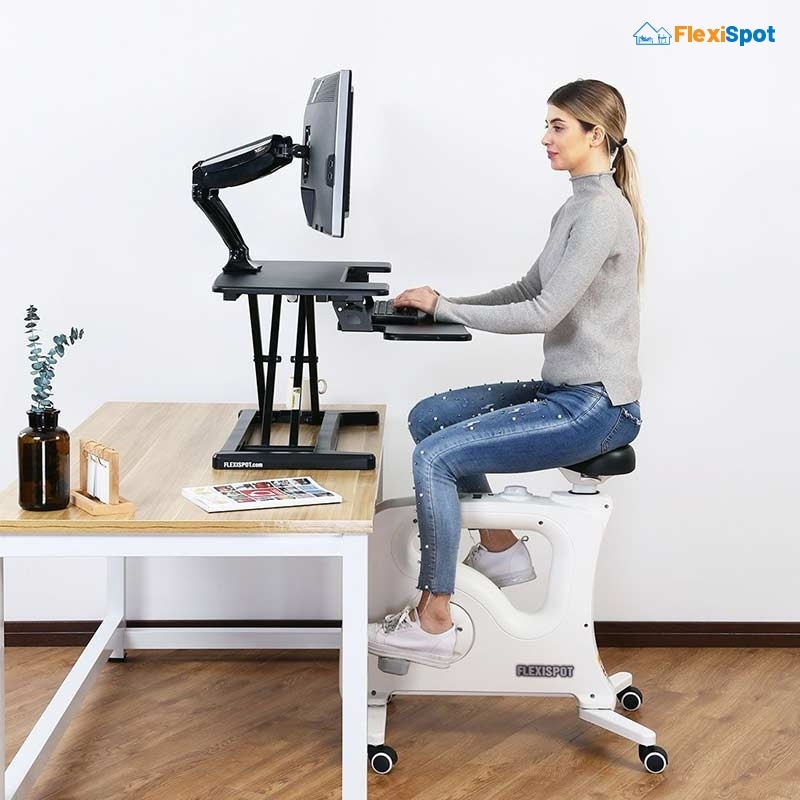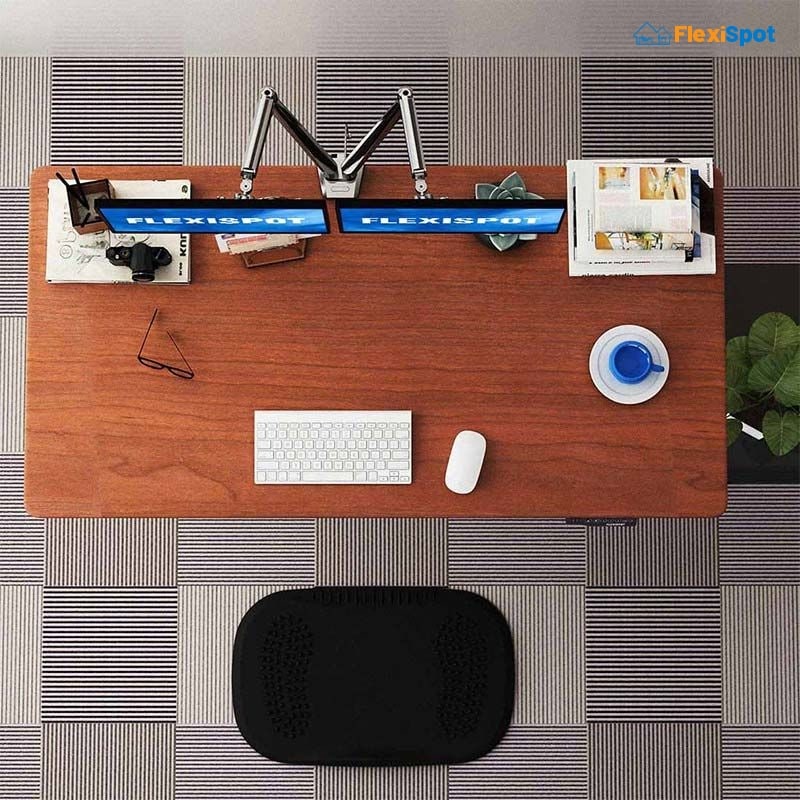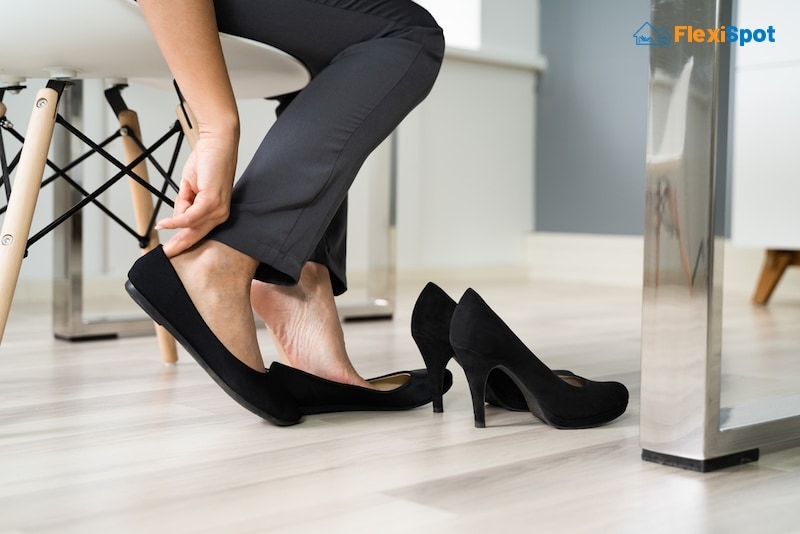If your job requires you to sit for prolonged hours, you are probably not a stranger to backache. Prolonged sitting at a desk for almost one-third of your day can lead to stiffness and tension in your body muscles that can cause extreme discomfort. While backache is a common problem, a condition known as sciatic pain is also becoming increasingly predominant. Sciatic pain is a condition when the pain originates from the lower back but it travels down through the leg and radiates through the thigh and can go as far as the feet.
Sciatic pain results from irritation of the sciatic nerve that's often a result of any other underlying condition of the spine, including osteoarthritis of the spine or spinal stenosis. However, it can also result from prolonged sitting, especially with poor posture, and is therefore becoming increasingly common among people with a desk job.
In what follows, we share an insight into how you can relieve sciatic pain while working at your office. So let's get started.
Sit Right
As mentioned earlier, one of the possible causes of sciatic pain is prolonged sitting, especially in poor posture. Some people unintentionally slouch or sit in an inappropriate posture, such as hunching. Fortunately, improving your posture and maintaining it is relatively easy, but it requires mindful practices. Perhaps the easiest way to maintain a good posture while you are working at your office is to invest in an ergonomic office chair.
Ergonomic office chairs are designed to provide adequate support to your arms, shoulders, spine, and buttocks. Moreover, the use of an ergonomic office chair ensures that you sit comfortably at the most appropriate height and offers you the flexibility to adjust the height of the chair or the depth of the seat for maximum support and comfort.
Apart from investing in an ergonomic office chair, the other most critical way to sit right is to think about your body in the right angles. When you are sitting on your chair, make sure your eyes should be at the same level as the center of the screen that you are looking at. Moreover, when you are sitting in a relaxed position, your ears should be directly above your shoulders, and your shoulders should be directly above your hips.
Moreover, your hips should make a 90O angle with your knees and there should also be a right angle between your knees and your feet. Lastly, your feet should be placed on the floor such that they make a right angle with the floor.
When you are trying to readjust your sitting position by incorporating the right angle rule, it may feel strange initially, but once you get used to the new sitting posture, it will help you manage your sciatic pain while working at the office.
Create an Ergonomic Workspace
While investing in an ergonomic office chair is a critical component of creating an ergonomic workspace, there are several other measures that you need to take to ensure that you get sciatica relief while working at your office.
Adjust the Height of Your Desk
An integral part of creating an ergonomic workspace involves adjusting the height of all your workplace accessories to ensure that you can maintain a proper sitting posture. To accomplish this goal, you may need to start by adjusting the height of your desk. A desk that is too high can strain your arms and shoulders, whereas a desk that is too low can cause you to slouch and strain your back which might aggravate your sciatic pain. Therefore a height-adjustable workstation makes the best ergonomic solution for employees. It allows employees to alternate their position from sitting to standing and vice versa at certain time intervals so employees can maintain adequate posture and relieve problems such as lower backache and sciatica.
Given the obvious benefits of a height-adjustable desk, convertible standing desks are becoming increasingly popular. However, if your office doesn't have a height-adjustable standing desk, you can invest in a standing desk converter.
A standing desk converter is a portable addition to your workstation that allows you to transform your conventional office desk into a standing desk. And if you are wondering if a standing desk converter is worth it? The answer is yes. Standing desk converters are typically lightweight, portable office accessories with a simple push and pull mechanism that allows you to enjoy the benefits of a standing desk without actually investing in one. So why not go for a low-price alternative of a convertible standing desk that offers you the same benefits.
AlcoveRiser Standing Desk Converters M7 is one of the best standing desk converters that will help you manage sciatic pain at work. Featuring two large trays for laptops or a desktop and a keyboard, the AlcoveRiser Standing Desk Converters M7 makes an ideal fit for your office desk. Featuring a height adjustment range of 4.7"-19.7", this standing desk converter provides the best compatibility for taller users. It is available in multiple sizes, so you can choose the one that fits well with your existing office desk. It features a removable keyboard tray that you can remove when you are working on your laptop. Moreover, its seamless height adjustment mechanism and high-quality construct makes it an ideal standing desk converter for users of all ages and sizes.
Adjust Your Monitor Level
Another critical aspect of creating an ergonomic workspace is to adjust your monitor level. You can raise or lower your screen’s height such that your gaze naturally falls on the area of your screen when you most often look. It ensures that you don’t have to lean forward or tilt your neck while working on your screen.
Moreover, apart from adjusting the monitor or screen level, you should also adjust the brightness of your computer screen. When the brightness of your screen is too low, it might cause you to lean forward. Similarly, when the screen is too bright, you might find it challenging to read through the screen, which can cause you to slouch.
Place Everything You Need Within Your Arm’s Reach
Part of creating an ergonomic workspace is placing everything you need within your arm’s reach. Depending on the things that you need most frequently, make sure you place them within arm’s reach so you can conveniently get whatever you need without leaning or stretching yourself. Moreover, also ensure that your keyboard and computer mouse is also well within your reach, so you don't have to push yourself further.
Get Moving
Most office jobs today involve standing or sitting in the same position for the most part of the working day. Prolonged sitting or standing can aggravate conditions like backache and sciatica. To break the cycle of pain and get sciatica relief while working at your office, make sure you follow the simple rule of getting moving. Simply ensure that you are not in the same position for more than an hour. If you have a job that requires you to sit for long hours, make sure to take a short break once every hour and go for a quick walk. Repeat the movement every hour so that the blood circulation in your body improves and you can get relief from aches and pains. Similarly, if your job requires you to stand for long hours, take a few minutes to break every hour to sit for some time and try out stretches that you can do while sitting.
Practice Proper Movements
If you are looking for sciatic relief while working at your office, know that you will have to take care of yourself beyond the office. While at home, make sure that you practice proper movements, especially when walking and lifting weight.
When you have to lift anything at your office or at home, make sure you practice proper lifting techniques and bend at the knees and hold the object close to your chest while keeping your back straight. It will help reduce the pressure on your spine, and you will be able to lift any moderate weight without aggravating sciatic pain. Moreover, when you are walking, ensure that your shoulders are relaxed and you have a straight back and chin.
Wear Supportive Footwear
If your office job requires you to stand for long or to walk around your office frequently, it's best to invest in supportive footwear. Instead of high heels, choose comfortable shoes that can support your position and movement.
If your job requires you to stand on a hard surface, you can also consider placing a padded floor mat under your workstation.
Final Words
Sciatica on its own may not be a life-threatening condition, but the pain it causes can severely affect the quality of your life. Fortunately, there are ways to get sciatic relief while working at your office. From investing in an ergonomic workstation to wearing supportive footwear and practicing proper movements throughout the day can ensure that you work productively while managing and relieving sciatic pain.








